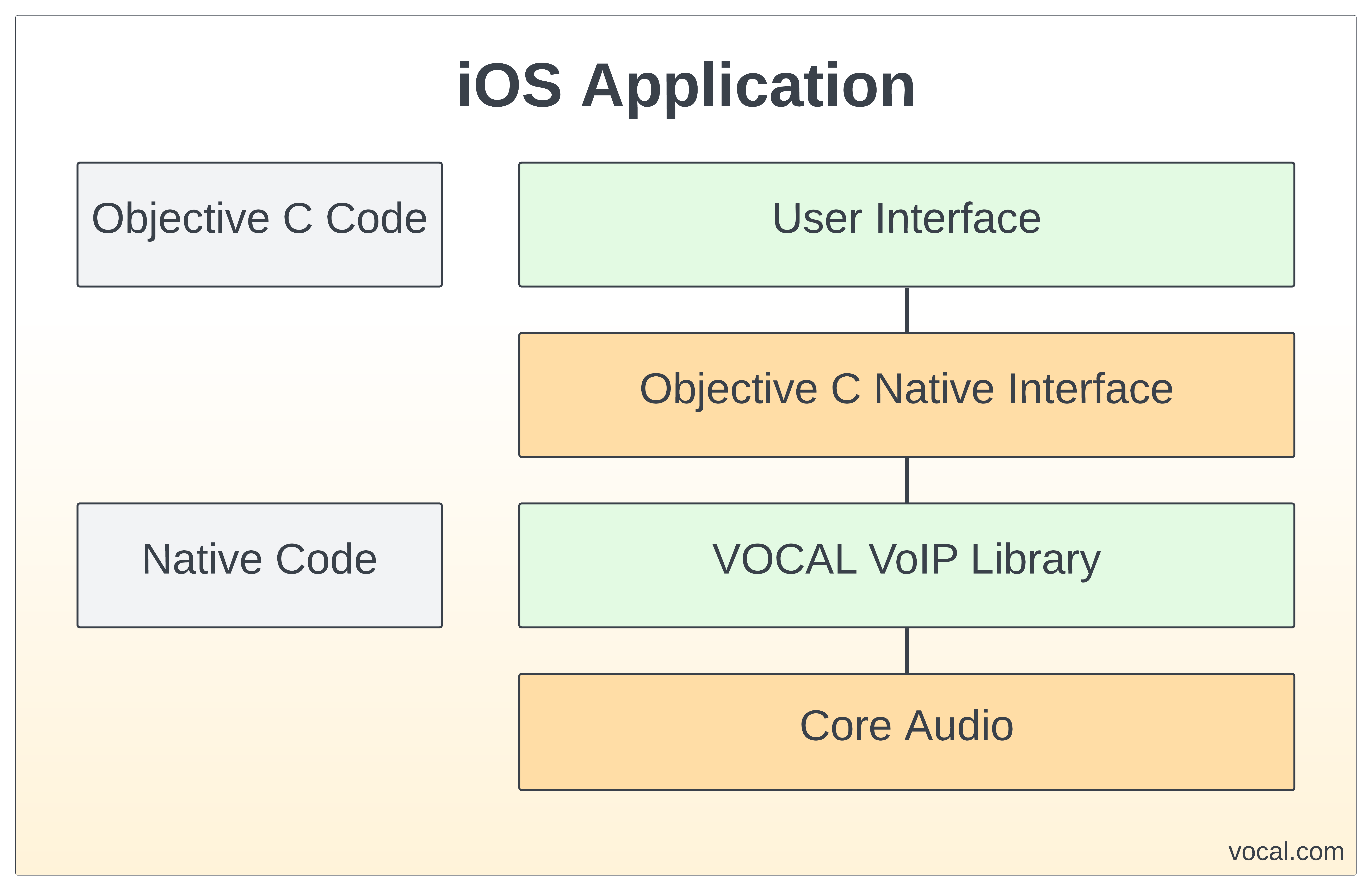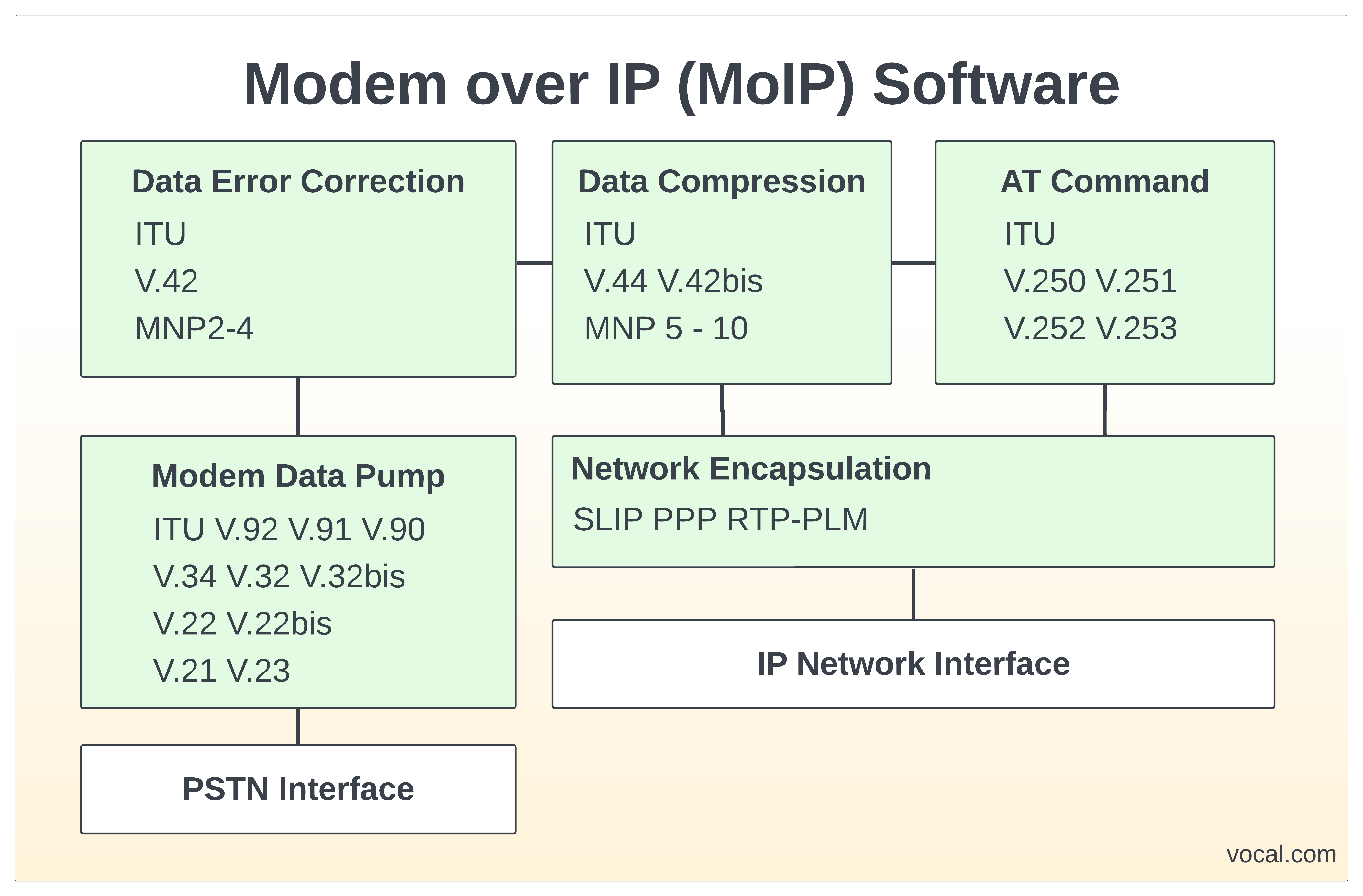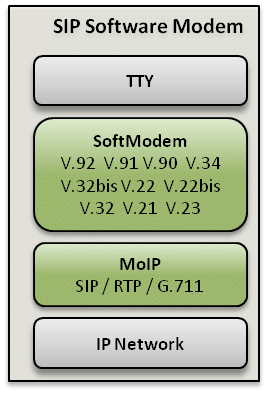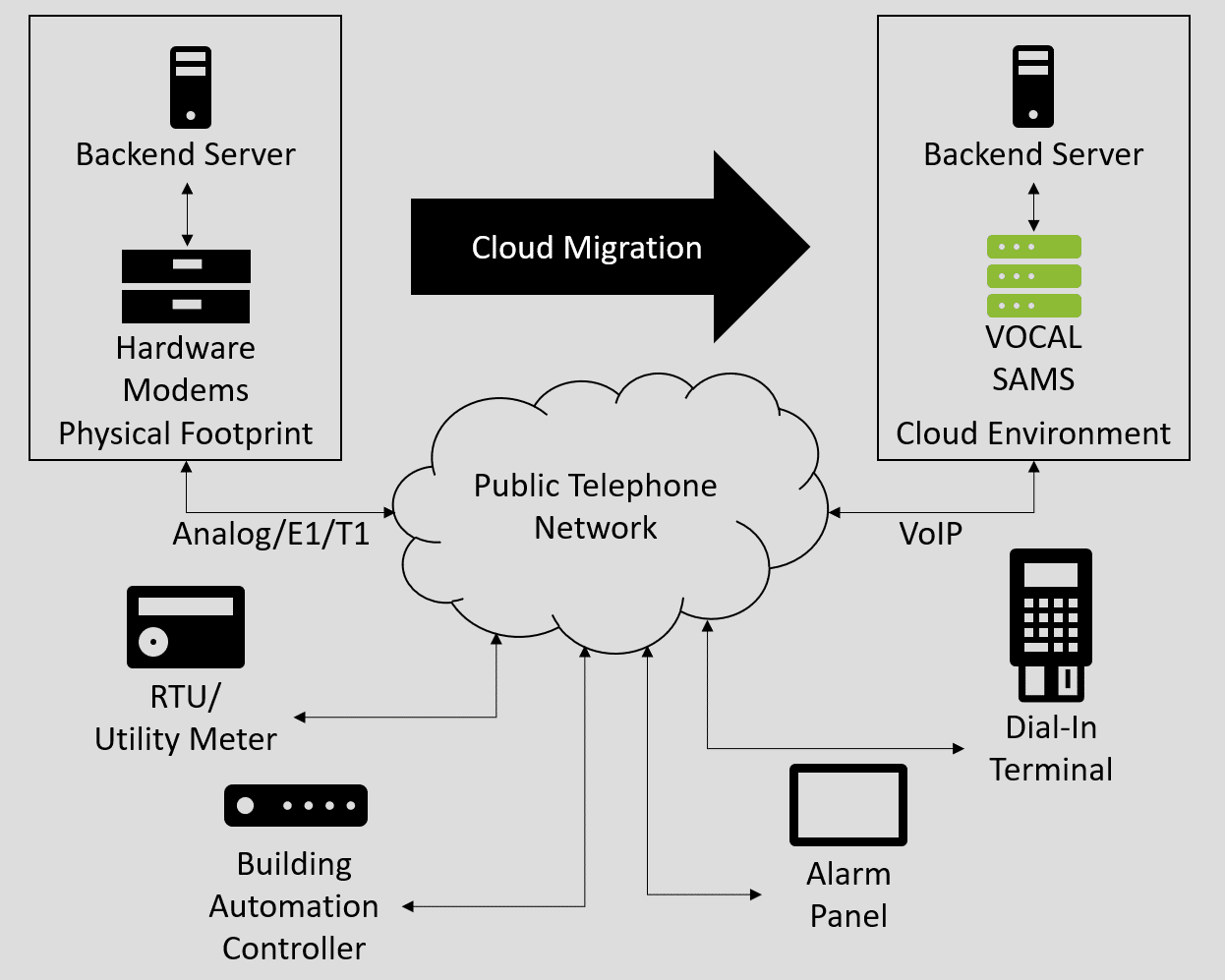
iOS VoIP SDK enables rapid development of native mobile VoIP apps on iPhone and iPad using a standards-based software development kit that can be easily configured for VoIP client server applications.
- Native iOS library with API
- Narrowband and wideband voice codecs available
- Echo and noise solutions for superior speech
- Full featured VoIP telephony
VOCAL’s iOS VoIP SDK library is modular with source code optimized for DSPs and ARM processors from TI, ADI and other leading vendors. Our embedded libraries are optimized for mobile devices and support a complete range of ETSI / ITU / IEEE compliant algorithms to develop a variety of iPad and iPhone mobile VoIP calling applications. The iOS VoIP SDK is available for licensing as a native iOS library. Custom solutions are also available to meet your specific Apple iOS developer requirements. Contact us to discuss your iPhone and iPad mobile VoIP application.
Features
- Optimized performance for iPhone, iPad and other mobile devices
- Range of standard and wideband optimized VoIP vocoders
- Robust echo cancellation, noise reduction, and beamforming for speech enhancement
- VoIP stack supports iPhone and iPad SIP client applications
- Multi-tasking and multichannel operations
- Full and half duplex modes
- TTY / TDD option available
- Compliant with ITU standards
Applications
- Voice and video over IP networks
- Wideband IP telephony
- Audio and video conferencing
- TTY / TDD calling
- Fax over IP
iOS VoIP Library
VOCAL’s native iOS VoIP library enables developers to meet unique mobile iPhone and iPad VoIP application and performance requirements. Apple iOS developers can access the iOS VoIP Library using Objective C. Our native iOS software development kit is developed in C/C++ and optimized for use with the iOS SDK. VOCAL’s iOS VoIP library includes:
- Native Objective C library interface
- Native VoIP stack with adaptive jitter
- VoIP codecs for narrowband and wideband speech and audio
- Voice quality enhancement with acoustic echo cancellation, noise reduction and dereverberation
- Acoustic beamforming for microphone noise reduction
iOS VoIP Stack
The native iOS VoIP stack provides access to the Vocoder Library and incorporates an adaptive jitter algorithm to further enhance voice quality. The proprietary jitter algorithm is exceptional at adapting to packet loss or delays from congested networks while maintaining constant audio output for the listener.
A native network stack and VoIP protocols can implement iPhone and iPad SIP client apps which provide full access to VoIP Internet calling and other services using SIP and RTP. Video conferencing and streaming are also supported with RTP. In addition, VoIP encryption using SRTP or TCP with SSL/TLS is available for secure iPhone and iPad SIP client communications.
iOS Speech Coders
The VOCAL Modular VoIP Stack includes a selection of optimized iOS vocoders for iOS developers to customize iPhone and iPad applications for unique voice codec requirements. VOCAL’s native libraries include the standard audio codecs G.711, G.722, G.722.1, G722.2, G.729, G.729A, G.729AB, as well as the low bit rate MELPe vocoder and the OPUS interactive audio codec. Additional voice codecs are available from VOCAL upon request. The following iOS vocoders are currently available for use in mobile VoIP calling and SIP client iPhone and iPad apps.
- MELPe – 600 bps / 1200 bps /2400 bps
- OPUS – 8kHz to 48kHz audio with dual layer LP and MDCT encoding
- G.711 – 64k bps PCM (A-law or μ-law form)
- G.722 – 7 kHz audio coding within 64 kbit/s (SB-ADPCM)
- G.722.1 – 24k and 32k bps, 7 kHz audio
- G.722.2 – Adaptive Multi-Rate Wideband (GSM AMR-WB)
- G.729AB – 8k bps CS-ACELP
- Speex – 8 kHz, 16 kHz, and 32 kHz CELP
- SILK – Wideband with variable bitrate
iOS Voice Quality Enhancement
The native iOS software development kit includes VOCAL’s voice quality enhancement system with echo cancellation, noise reduction, and speech dereverberation optimized for iPhone and iPad and other mobile devices. Acoustic echo cancellation removes reflected copies of a direct path wave from the acoustic/mechanical coupling between speaker and microphone; dereverberation addresses reflections from surfaces in an enclosed environment; while noise reduction reduces additive noise sources, such as wind. These techniques provide improved voice quality and speech intelligibility.
Beamforming
Acoustic beamforming algorithms are provided in the libraries to capture the speaker’s voice. Mobile devices are increasingly used as speakerphone systems where the microphone is removed some distance from the speaker. Beamforming can be used on newer mobile devices with microphone arrays to focus in the direction of the speaker and minimize background noise from other directions.

VOCAL’s solution is available for the above platforms. Please contact us for specific supported platforms.


